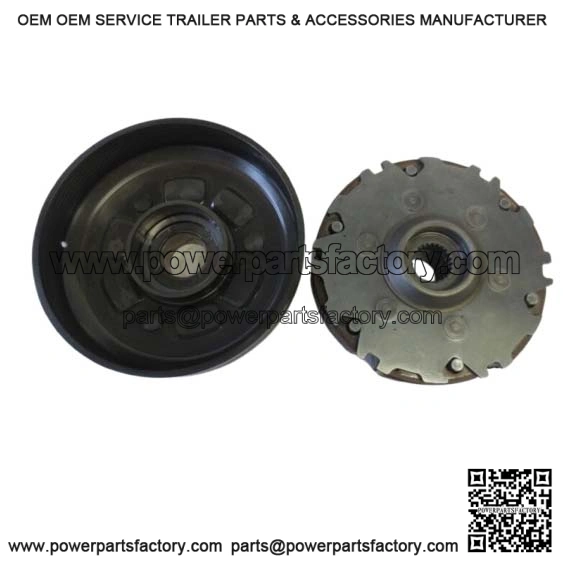“How to Install & Maintain the 01-03 Honda Rubicon TRX 500 OEM Wet Centrifugal Clutch – A Guide for Repair Shops”
Introduction
For repair shops servicing the 01-03 Honda Rubicon TRX 500, the OEM wet centrifugal clutch is a critical component that ensures smooth power transmission and longevity. Unlike aftermarket alternatives, a used OEM clutch retains the original engineering tolerances and material quality, making it the preferred choice for professional mechanics. In this guide, we’ll walk through installation best practices, maintenance tips, and why sourcing from a certified manufacturer (like us, with 20+ years in ATV parts) matters.
Pre-Installation Inspection
Before installing a used OEM clutch, always inspect:
-
Friction Plates: Check for glazing or wear (minimum thickness: 2.8mm per Honda specs).
-
Steel Plates: Look for warping (place on a flat surface; gaps indicate distortion).
-
Springs: Measure free length (should be 50.5mm ±1mm; replace if sagged).
-
Hub Splines: Ensure no rust or burrs that could hinder engagement.
Pro Tip: Soak friction plates in ATV-specific transmission oil for 30 minutes pre-installation to prevent premature wear.
Step-by-Step Installation
Tools Needed: Impact wrench (17mm socket), torque wrench, gasket scraper, clutch holder tool.
-
Remove the Old Clutch:
-
Drain transmission oil and remove the right-side crankcase cover.
-
Use the clutch holder tool to secure the clutch basket while loosening the center nut (torque: 60-70 Nm).
-
-
Install the OEM Wet Clutch:
-
Align the hub splines with the crankshaft (apply a thin layer of molybdenum grease to splines).
-
Alternate friction and steel plates (Honda’s OEM sequence: starts with a friction plate).
-
Torque the center nut to 65 Nm and secure with a new lock washer.
-
-
Reassembly:
-
Replace the crankcase gasket to prevent leaks.
-
Refill with Honda HP4 10W-30 transmission oil (1.6L capacity).
-
Maintenance Best Practices
-
Break-In Period: Avoid aggressive throttle for the first 10 hours to allow plates to seat properly.
-
Symptoms of Failure:
-
Slipping: RPMs surge but ATV doesn’t accelerate (indicates worn plates).
-
Drag: Difficulty shifting (often due to warped steels).
-
-
Cleaning: For wet clutches, change oil every 100 hours (or annually) to remove debris.
Why Choose Our OEM Clutch?
-
Certified Quality: CE/DOT-compliant, backed by our 18000+ product range in off-road parts.
-
Cost-Effective: 30% cheaper than new OEM, with identical performance.
-
Global Stock: Ships within 48 hours to repair shops via our distribution network.

